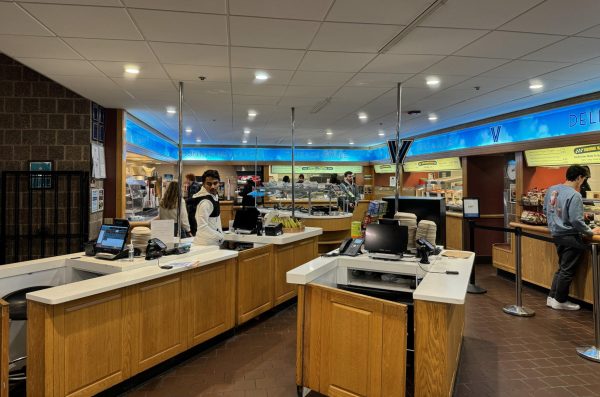University dedicates Law building
October 21, 2009
The School of Law’s new building had its dedication on Oct. 5 hosted by University President Rev. Peter Donohue, O.S.A, and School of Law Acting Dean Doris DelTosto Brogan.
“We really are a part of each other,” Donohue said, noting that the building’s rows of mirrored windows reflect various other buildings on campus. “We’re really trying to embrace the entire Villanova community.”
Also attending was Board of Trustees Chair Herbert F. Aspbury, who discussed the development of the campus in general.
“It’s a not every year we celebrate the dedication of a new building here on campus,” Aspbury said jokingly because of the recent addition of both Driscoll Hall and Davis Center over the past two years. “At the top of the list was the law school, so it’s very gratifying to see it in its completion.”
The Board was looking at multiple construction sites in nearby towns, including Haverford, but chose an on-campus location.
During the building’s blessing, a procession of various representatives of the law school carried in items from Garey Hall to display, including a photo of the first class. But the dedication also marked the beginning of a new era for the Villanova University Law School community.
“Today we celebrate a legacy of people on whose shoulders we stand as we reach toward the future,” Brogan said. She spoke of the first class of what was then an unaccredited law program. Then, there were 65 men and three women who met in borrowed classrooms.
The location of the school’s clerical office at the forefront of the building is significant because it is an office that does pro bono work to help the disenfranchised and forgotten, according to Donohue.
“You can just feel that students here are learning,” said law professor Michelle Pistone who works with the clinical program.
She said programs like the clinical office provide students with the opportunity to act in the role of lawyer.
Professors and students alike agreed that the new building was a much-needed change. The new building has more seating areas and reading rooms where students can study alone or in groups.
“It gives us a space for students and faculty to interact outside the classroom, a place for students to call home,” said Professor Steve Chanenson, who teaches criminal law.










